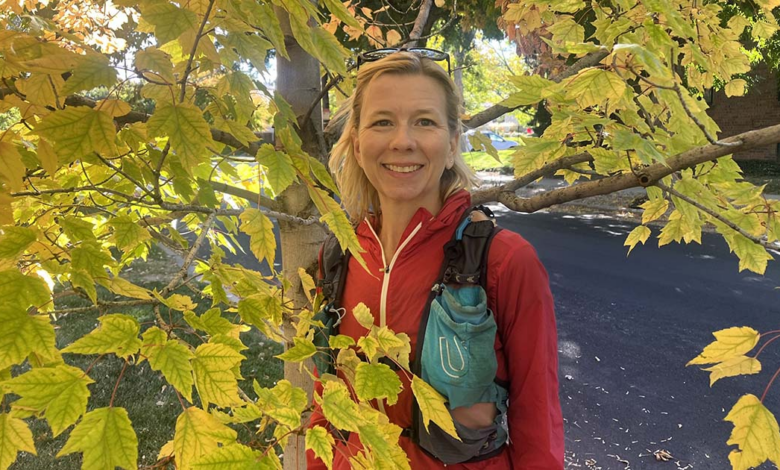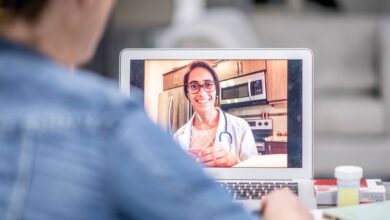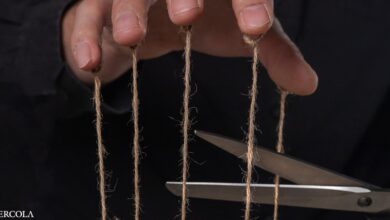Colorado hospital achieves the quadruple aim with RTLS, part 1


On July 11, 2023, the Mountain Region of 160-hospital health system CommonSpirit Health opened its newest hospital, St. Francis Interquest, in Colorado Springs, Colorado.
St. Francis Interquest, a 72-bed orthopedic and spine hospital, is the culmination of several years of work to realize the promise of technological innovations to transform patient care. St. Francis Interquest has been designed as a “hospital of the future,” focused on selecting technologies that would help CommonSpirit realize the quadruple aim: enhanced patient experience, improved population health, cost reduction and care team wellbeing.
Using human-centered design principles, a cross-functional design team conducted hundreds of hours of stakeholder interviews, embracing the “art of the possible” throughout the design process. Real-time locating systems (RTLS) emerged early on as a key innovative technology to improve care quality, patient experience and clinician wellbeing. But the sensors’ expense, coupled with providers’ sometimes limited deployment of them, meant the tech’s touted promise was not always fulfilled.
But that has changed in recent years, as cost has come down and health systems have gotten more imaginative in the ways they’re using the tracking sensors. To gain a deep understanding of the various ways this hospital of the future is using RTLS, Healthcare IT News spoke with Dr. Valerie McKinnis, chief medical informatics officer at Mountain Region CommonSpirit Health, a 20-hospital health system based in Colorado.
Q. A good place to start is with St. Francis Interquest itself. What exactly do you mean by hospital of the future?
A. Hospital of the future really references that next generation of medical care where we’re looking at transformative technologies to help us really understand how we can get to the promise of the quadruple aim.
The quadruple aim really is how do we enhance patient experience? How do we improve the health of the population that we’re serving? How can we reduce costs all while increasing the wellbeing of our care team? Understanding, especially after the emergence of the pandemic, that we’ve become aware of new challenges to providing care within the hospital context.
How do we really look at not just what possible technology is out there to improve care, but really what are the ways in which we would integrate those technologies to create a next generation experience where care feels seamless for our patients?
Admittedly, right now, care in most of our hospitals across the country is very disconnected. And if you’ve been a patient recently, you recall different parts of it. You’re like, could everybody just get organized and be on the same page? And really, hospital of the future is how do we use technology to achieve that goal? How do we all get on the same page in terms of the patient’s care?
Q. RTLS is not a high-profile, sexy technology. What is it about RTLS that has made the technology so important to the efforts at your hospital of the future?
A. I continue to work as a physician, as a hospitalist in our facilities with our frontline hospital staff, meaning our nurses and our physicians and other ancillary staff. They spend hours a day looking for people and for equipment. When we started to think about what a hospital of the future would look like, we knew we had to solve this basic problem because it is ubiquitous among every hospital setting I’ve ever been in.
And understanding how to find our people and our things really was clear to us early on as essential to improving the care of our patients, streamlining operations, and enhancing the efficiency of care that we give our patients in the hospital.
So, we saw RTLS as a key to this, to help us with several challenges beyond just finding patients and things, including workflow optimization, data analytics, infection control, reducing cost by understanding what we’re doing and why, even compliance and accreditation issues, as well as emergency response.
We knew at the outset that RTLS would serve as an integrating technology extending beyond simply locating people and things. We really looked at it as an enabler that would integrate with other technologies in our environment to help us produce that seamless next generation end-to-end experience for our patients.
Q. Let’s talk about three of your uses of RTLS. First, RTLS-enabled Epic Monitor authorization and log-in. Please describe how the technology is applied here and what it achieves that you couldn’t as easily achieve otherwise.
A. This is one of my favorite things we did in our hospital of the future. My bias as a clinician will come through here because as a hospitalist, I spend my days hunting and gathering information and trying to have enough time to spend with the patient to review all the data and be with the patient in a way that’s meaningful at the bedside.
So, we started looking at how we could look at transforming the rounding experience. Meaning those daily bedside rounds where the physicians and nurses and other members of the care team go to see the patients in their rooms. How could we really change that experience, which was often very disconnected, had multiple people on different devices, may have had me on a computer logging in with my back to the patient?
Or worse, I would be carrying around scraps of paper with things written down and trying to remember which patient and what I needed to discuss. We started from the outset reimagining Epic Monitor.
Instead of just a digital whiteboard for the patient or a way to leave messages, we reimagined Epic Monitor as a high-yield clinician rounding tool that incorporated key clinical information that our physicians and nurses and other members of our care team felt were essential to really doing effective bedside rounds with the patients.
On our version of Epic Monitor, the clinician view, we included information like vital signs, laboratory studies, patient’s medication orders and administration radiology studies. And we displayed these all in a test-screen monitor at the foot of the patient’s bed with a drill-down display.
Our goal really from the outset was for our clinicians, when they walked in the room, to have immediate access to the essential data about the patient during rounds without ever having to log into a computer. And we knew, obviously, that we didn’t want to display this data all day long on the patient’s monitor at the foot of their bed, given privacy concerns. We just wanted to make this that high-yield rounding activity with the patients.
Again, my dream was when I walk in the room as a physician on the patient’s monitor, poof, all the information I need to take care of that patient appears without me ever having to go to a device and put in my credentials. To achieve this, we developed RTLS-enabled authorization with an automatic login for our clinicians when they enter a patient’s room.
When a clinician walks into a patient’s room, an RTLS tag embedded into their hospital badge sends a signal to the in-room RTLS sensor, which then is recognized by the active directory system, which an interface with Epic is able to grant role-based access to Epic Monitor.
What this means for me is, as a physician, when I walk into a patient’s room with my RTLS hospital badge, Epic Monitor automatically switches from the patient’s whiteboard view to this high-yield clinical rounding view. I’m able, at the foot of the patient’s bed in real time, to review all of their information with them.
I can look at what their laboratory studies were that morning and trend them and drill down into the display. Just using my finger, I can pull up the patient’s CAT scan from earlier in the day and pull up the real images and review them at the bedside, circling abnormalities and really involving the patient in the care.
What this integration with Epic Monitor really enables me to do is, as I enter the room, I’m able to completely focus my attention on that patient during rounds and engage them in their care, rather than turning my back to them, logging into computers, trying to understand other devices in their room – everything is in one spot.
Editor’s Note: Tune in tomorrow for part two of this feature story where Dr. Valerie McKinnis will outline how RTLS is being used in finding everything from staff and patients to equipment and patients’ personal items – and how that also helps add up to the quadruple aim.
Follow Bill’s HIT coverage on LinkedIn: Bill Siwicki
Email him: [email protected]
Healthcare IT News is a HIMSS Media publication.




